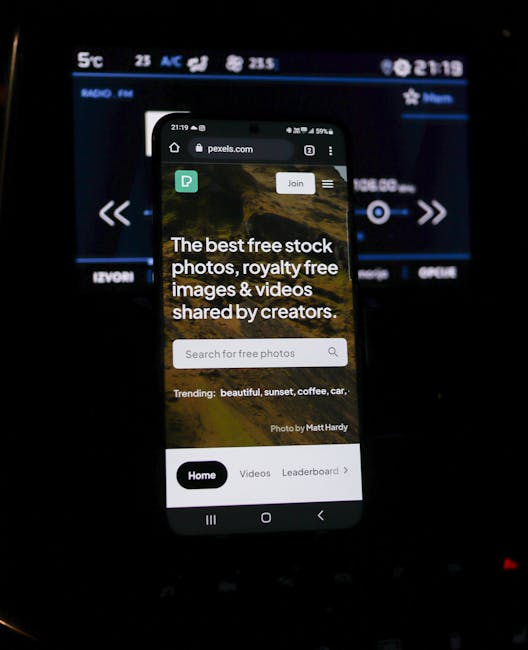Defining an authentic brand voice for online content transcends mere stylistic preference; it is a foundational pillar of effective digital communication and a strategic imperative for any entity aiming to forge a resonant connection with its audience. Brand voice represents the consistent personality and emotion behind your brand’s communication. It is the distinct way your brand speaks, both verbally and non-verbally, across all digital touchpoints. Far from being a superficial add-on, a well-defined brand voice is the embodiment of your brand’s values, mission, and unique identity, articulated through every piece of content you produce.
Understanding the nuances of brand voice begins with distinguishing it from related concepts, particularly tone. While often used interchangeably, voice is consistent and enduring, akin to a person’s inherent personality. A brand might always be “witty” (its voice), but its tone might shift to “sympathetic” when addressing a customer complaint or “jubilant” when announcing a new product launch. Tone is contextual and adaptable, whereas voice remains the bedrock. A strong brand voice ensures that regardless of the specific message or platform, your audience consistently recognizes and feels a connection to your brand’s unique character.
The importance of a clearly articulated brand voice in the digital age cannot be overstated. In a perpetually noisy online landscape saturated with content, differentiation is paramount. A distinctive voice helps your brand cut through the clutter, capturing attention and fostering memorability. It cultivates trust and credibility by projecting authenticity and consistency, crucial attributes for building lasting relationships with consumers. When your brand speaks with a clear, consistent voice, it builds a cohesive narrative that resonates deeply, making your content more engaging, relatable, and ultimately, more effective in achieving its strategic objectives, whether that’s driving conversions, building community, or simply enhancing brand awareness.
The Foundational Pillars of Brand Voice
To effectively define a brand voice, it’s essential to dissect its core components: Personality, Tone, Language, and Purpose. These elements interweave to create the holistic expression of your brand.
-
Personality: This is the heart of your brand voice. Just like people, brands can be described using adjectives: innovative, playful, authoritative, empathetic, edgy, sophisticated, casual, serious, or adventurous. Your brand’s personality dictates how it sounds, what kind of stories it tells, and how it interacts with its audience. It should reflect your brand’s core values and resonate with your target demographic. For instance, a tech startup might aim for an innovative and approachable personality, while a luxury brand would likely cultivate an elegant and exclusive one. This personality needs to be consistently applied across all online content, ensuring that whether a user is reading a blog post, a social media update, or an email, the underlying character of the brand remains unmistakably consistent. Delving deeper into personality often involves exploring brand archetypes, which are universal patterns of human behavior and motivation. Applying archetypes like the Innocent, the Sage, the Explorer, or the Rebel can provide a rich framework for developing a brand’s unique persona, offering a comprehensive blueprint for its communication style and values.
-
Tone: While voice is who your brand is, tone is how your brand speaks in specific situations. It’s the emotional inflection of your voice. A brand might have an overarching friendly voice, but its tone will become more serious and empathetic when addressing a crisis, more celebratory when sharing good news, or more instructive when providing a tutorial. The key is that the tone always stems from and aligns with the overarching brand voice. It’s about adapting the message’s emotional register without betraying the core personality. For example, a financial services brand with an authoritative and trustworthy voice might adopt a reassuring tone when discussing market volatility but a more encouraging tone when advising on investment strategies. Understanding the dynamic interplay between voice and tone allows for strategic flexibility in communication, ensuring appropriateness for every context while maintaining brand identity.
-
Language: This pillar encompasses the specific words, phrases, grammatical structures, and stylistic choices your brand uses. It includes vocabulary (simple vs. complex, formal vs. informal, jargon vs. plain language), sentence length and structure (short, punchy sentences vs. flowing, descriptive ones), use of slang, idioms, humor, and even the approach to punctuation and capitalization. A brand targeting Gen Z might employ contemporary slang and emojis, while a professional B2B service might stick to more formal, precise language. Considerations also extend to the use of active versus passive voice, the inclusion or exclusion of contractions, and adherence to specific editorial style guides. The intentional selection of language reinforces personality and tone, ensuring that the brand’s message is not only understood but also felt in the intended manner. This includes how the brand addresses its audience (e.g., “you,” “we,” “our customers”) and whether it uses first, second, or third person narration. Every linguistic choice contributes to the overall impression and perceived identity of the brand.
-
Purpose/Message: Beyond the “how” your brand speaks, there’s the “why” and “what.” What is the overarching message your brand aims to convey? What problems does it solve for its audience? What unique value does it offer? This pillar ensures that the brand voice is always aligned with the brand’s strategic objectives and its core value proposition. The voice should effectively communicate the brand’s mission, vision, and differentiators. For a sustainable fashion brand, the purpose might be to advocate for ethical consumption, and its voice would reflect this through informative, inspiring, and sometimes challenging language. For a SaaS company, the purpose might be to simplify complex tasks, leading to a voice that is clear, instructional, and empowering. The purpose guides the thematic content and ensures that the voice isn’t just aesthetically pleasing but functionally effective in achieving brand goals and reinforcing the brand’s reason for existence.
Why Brand Voice Matters Profoundly for Online Content
The digital ecosystem amplifies the necessity of a defined brand voice due to its unique characteristics: immediacy, interconnectedness, and the sheer volume of competing information.
-
Building Authentic Connections with the Audience: In an era of digital skepticism, authenticity is highly prized. A consistent and genuine brand voice humanizes your brand, making it more relatable and trustworthy. When your audience feels they know “who” they’re interacting with online, they are more likely to form emotional connections, fostering loyalty and advocacy. This authenticity translates into higher engagement rates, as users feel a genuine rapport with the content they consume.
-
Distinguishing from Competitors: The internet makes it easy for consumers to compare products, services, and brands. A unique brand voice acts as a powerful differentiator that cannot be easily replicated. While competitors might offer similar products, their voice, if well-defined, will be distinct, allowing your brand to carve out its own niche in the minds of consumers. This differentiation is crucial for standing out in crowded markets and creating a memorable impression.
-
Enhancing Brand Recognition and Recall: Consistency across all online content channels reinforces your brand identity. When your brand voice is distinctive and consistently applied, it becomes recognizable, even without explicit branding elements. This aids in brand recall, ensuring that when a consumer thinks of a particular product or service, your brand is top of mind. This subtle yet powerful form of branding builds long-term equity and reduces marketing friction.
-
Improving Content Effectiveness (Engagement, Conversions): Content that speaks with a clear, appropriate voice is inherently more engaging. It resonates with the target audience’s preferences, making them more likely to read, watch, listen, and interact. Engaged users are more likely to convert, whether that means making a purchase, subscribing to a newsletter, or sharing content. A compelling voice persuades, informs, and entertains more effectively, directly impacting key performance indicators.
-
Facilitating Consistent Multi-Channel Presence: Modern digital marketing strategies involve a multitude of platforms: websites, blogs, social media (Facebook, Instagram, LinkedIn, TikTok, X), email, video, podcasts, and more. A defined brand voice provides a unifying thread across all these channels. It ensures that regardless of where a user encounters your brand, the experience feels cohesive and unmistakably yours, preventing disjointed or confusing communication that can dilute brand perception.
-
SEO Benefits (User Engagement Signals, Dwell Time): While brand voice isn’t a direct SEO ranking factor, its impact on user engagement signals is undeniable. Content written with an engaging voice is more likely to capture and hold a user’s attention, leading to longer dwell times, lower bounce rates, and increased click-through rates from search results. These positive user experience metrics signal to search engines that your content is valuable and relevant, indirectly boosting your search rankings. Furthermore, a unique voice can help attract more inbound links and social shares, further enhancing SEO performance.
Strategic Steps to Define Your Brand Voice
Defining your brand voice is not an abstract exercise; it’s a strategic process requiring introspection, research, and collaborative effort.
-
Audience Analysis: Who Are You Speaking To?
The cornerstone of any effective communication strategy is a deep understanding of the audience. Your brand voice must resonate with the people you aim to serve.- Demographics: Beyond basic age, gender, and location, delve into income levels, education, occupation, and family status. How might these factors influence their communication style and preferences?
- Psychographics: Explore their values, beliefs, attitudes, interests, and lifestyles. What motivates them? What are their aspirations, fears, and pain points? Do they value humor, authority, empathy, or directness?
- Communication Style: How do they typically communicate? Are they formal or informal? Do they prefer plain language or appreciate industry-specific jargon? Do they respond well to visual content, short-form text, or long-form articles? Do they use emojis, slang, or specific online communities? Understanding their preferred mode of interaction is vital.
- Pain Points and Aspirations: What problems are they trying to solve? What are their goals? Your voice should reflect an understanding of these, offering solutions and support in a manner that feels empathetic and relevant. Creating detailed buyer personas can bring this audience analysis to life, giving your brand a specific individual to “speak to” when crafting content.
-
Brand Identity & Values: What Does Your Brand Stand For?
Your brand voice must authentically represent your brand’s core essence.- Mission and Vision: What is your brand’s purpose? What future are you trying to create? Your voice should embody these overarching goals.
- Core Values: What principles guide your brand’s decisions and actions? If “innovation” is a core value, your voice should be forward-thinking and embrace new ideas. If “integrity” is key, your voice should be transparent and trustworthy.
- Unique Selling Proposition (USP): What makes your brand different from competitors? Your voice should highlight this differentiation, allowing your brand’s unique value to shine through in every message. Conduct internal workshops with key stakeholders to articulate these elements clearly. This ensures that the voice developed isn’t just marketing fluff but a true reflection of the organization’s ethos.
-
Competitive Analysis: How Do Others Speak?
Understanding the competitive landscape provides critical context.- Direct Competitors: Analyze the brand voices of your direct competitors. What do they do well? Where are their weaknesses? How do they resonate (or fail to resonate) with their audience?
- Indirect Competitors/Industry Leaders: Look beyond direct rivals to other players in your industry or even brands in adjacent spaces that excel at communication. What can you learn from their approaches?
- Differentiation Opportunities: Identify gaps or opportunities to differentiate your voice. If all your competitors are formal and conservative, perhaps an approachable and innovative voice could help you stand out. This analysis isn’t about copying but about finding your unique communicative territory. Document specific examples of good and bad voice usage from competitors to guide your own development.
-
Brand Archetypes: Exploring Universal Personalities
Using brand archetypes, rooted in Carl Jung’s psychological theories, can be a powerful tool to distill your brand’s personality into a relatable framework. There are 12 primary archetypes, each with distinct motivations, characteristics, and communication styles:- The Innocent: Optimistic, pure, simple, wholesome. Voice: Joyful, honest, trustworthy, comforting. (e.g., Dove, Coca-Cola)
- The Sage: Wise, knowledgeable, truth-seeking, mentor. Voice: Authoritative, reflective, informative, expert. (e.g., Google, Harvard University)
- The Explorer: Independent, adventurous, pioneering, freedom-loving. Voice: Inspiring, daring, discovery-oriented, authentic. (e.g., Patagonia, Jeep)
- The Outlaw/Rebel: Disruptive, revolutionary, rules-breaking, agent of change. Voice: Edgy, unconventional, provocative, direct. (e.g., Harley-Davidson, Virgin)
- The Magician: Visionary, transformative, powerful, enchanting. Voice: Inspiring, mysterious, innovative, charismatic. (e.g., Dyson, Tesla)
- The Hero: Courageous, strong, determined, champion. Voice: Bold, confident, motivating, direct. (e.g., Nike, FedEx)
- The Lover: Intimate, passionate, sensual, romantic. Voice: Warm, empathetic, evocative, charming. (e.g., Chanel, Godiva)
- The Jester: Fun-loving, humorous, playful, joyful. Voice: Witty, irreverent, entertaining, lighthearted. (e.g., Old Spice, M&M’s)
- The Caregiver: Nurturing, compassionate, selfless, protective. Voice: Warm, empathetic, comforting, supportive. (e.g., Johnson & Johnson, Red Cross)
- The Regular Guy/Gal (Everyman): Down-to-earth, relatable, authentic, democratic. Voice: Accessible, friendly, humble, honest. (e.g., IKEA, Budweiser)
- The Creator: Innovative, imaginative, artistic, visionary. Voice: Expressive, inspiring, original, imaginative. (e.g., Adobe, Lego)
- The Ruler: Authoritative, controlling, leading, responsible. Voice: Confident, commanding, sophisticated, exclusive. (e.g., Mercedes-Benz, Rolex)
Selecting one or two dominant archetypes can provide a clear psychological foundation for your brand’s personality, guiding its verbal expression and overall messaging strategy.
-
Voice Adjectives Exercise: Distilling Core Traits
After considering audience, identity, and archetypes, translate these insights into a concise set of descriptive adjectives. Aim for 3-5 core adjectives that truly capture the essence of your brand’s desired voice.- Brainstorming: Gather a diverse group (marketing, sales, product development, leadership) and brainstorm adjectives that describe how you want your brand to be perceived.
- Prioritization: Narrow down the list to the most essential traits. For each adjective, ask: “What does this mean in terms of language choices? What does it not mean?”
- Defining Operational Terms: For example, if “Approachable” is an adjective, what does that mean for your content? (e.g., using contractions, simple vocabulary, asking questions). If “Authoritative” is an adjective, what does that mean? (e.g., citing sources, confident statements, avoiding hedging language). Avoid generic terms like “good” or “professional.” Instead, seek specific, evocative words. This exercise solidifies the abstract concept of voice into actionable characteristics.
-
Creating a Brand Voice Guide/Persona: Documenting the Voice
The most crucial step is to formalize your brand voice into a comprehensive guide accessible to everyone who creates content for your brand. This ensures consistency and scalability.- Voice Adjectives Defined: Explicitly define the 3-5 chosen adjectives, explaining what each means in the context of your brand’s communication. Provide clear “Do’s” and “Don’ts” for each.
- Example for “Approachable”:
- Do: Use conversational language, contractions, address the reader directly (“you”), tell stories, use analogies.
- Don’t: Use overly formal jargon, sound condescending, use passive voice excessively, write overly long sentences without breaking them up.
- Example for “Approachable”:
- Examples of Good/Bad Copy: Include concrete examples of content that perfectly embodies your voice and examples that miss the mark. This visual contrast is highly effective for training.
- Glossary of Terms: List preferred terminology, brand-specific phrases, and terms to avoid. For example, if your brand sells “sustainable solutions,” specify whether to use “eco-friendly,” “green,” or “environmentally conscious.”
- Grammar Rules/Style Guide: Outline specific stylistic preferences, such as capitalization rules, punctuation usage (e.g., oxford comma preference), numerical formatting, and abbreviation policies. This often aligns with a broader editorial style guide (e.g., AP Style, Chicago Manual of Style) but includes brand-specific deviations.
- Specific Guidelines for Different Platforms/Content Types: Recognize that while the core voice remains constant, the tone and specific linguistic choices might adapt slightly for different platforms.
- Blog: Perhaps more detailed and informative, but still engaging.
- Social Media: Shorter, more reactive, potentially more playful depending on the platform.
- Email: Direct, personalized, action-oriented.
- Video Scripts: Conversational, designed for spoken delivery, considering visual cues.
- Persona Profile: Sometimes, creating a persona for your brand (e.g., “If our brand were a person, who would they be?”) can further cement the voice. Give them a name, job, hobbies, and personality traits. This allows content creators to imagine they are “channeling” this persona when writing.
- Voice Adjectives Defined: Explicitly define the 3-5 chosen adjectives, explaining what each means in the context of your brand’s communication. Provide clear “Do’s” and “Don’ts” for each.
Implementing Brand Voice Across Online Content Types
A defined brand voice is only effective when consistently applied across the entire spectrum of online content.
-
Website Copy: Your website is often the first, and most critical, touchpoint. Every page – homepage, About Us, product descriptions, service pages, FAQs – must speak with your brand’s voice. The language used in headlines, calls to action (CTAs), and explanatory text should reinforce your brand personality. If your voice is inspiring, CTAs might be “Discover Your Potential.” If it’s practical, they might be “Get Started Today.” The “About Us” page is a prime opportunity to tell your brand story in your authentic voice, sharing your mission and values.
-
Blog Content: Blogs are ideal for showcasing your brand’s expertise, thought leadership, and personality. The article style (e.g., instructional, narrative, persuasive), the choice of headings, the depth of explanation, and the way you engage readers through questions or anecdotes should all reflect your voice. If your voice is educational, blog posts will be information-rich and well-researched. If it’s more conversational, they’ll read like a friendly chat. Ensure the tone adapts appropriately for different types of blog posts, from breaking news to evergreen content.
-
Social Media: Social platforms demand adaptability. While the core voice is stable, the tone and specific language will vary by platform.
- Instagram: Visually driven, often requires a more concise, engaging, and sometimes playful or aspirational voice in captions. Emojis and hashtags play a role.
- LinkedIn: More professional, authoritative, and informative. The voice should reflect industry expertise and thought leadership.
- TikTok: Highly creative, often trend-driven, requiring a more agile, humorous, and authentic voice.
- X (formerly Twitter): Concise, real-time, often conversational, sometimes witty or direct.
Your social media team must be thoroughly trained in applying the brand voice across these varied contexts, ensuring consistency despite platform-specific nuances. This includes how the brand responds to comments, DMs, and mentions.
-
Email Marketing: From subject lines to body copy and calls to action, every element of your email communication should resonate with your brand voice. A consistent voice builds familiarity and trust, increasing open rates and click-through rates. Whether it’s a promotional email, a welcome series, or a customer service update, the language should feel like it’s coming from your brand. Personalization can further enhance this by making the voice feel even more direct and tailored to the individual recipient.
-
Video Scripts: Video content, whether for YouTube, short-form social media, or webinars, requires scripts that translate the written brand voice into spoken word. Consider the presenter’s style, intonation, and body language – all of which contribute to the overall impression of your brand’s voice. The script should sound natural when spoken, avoiding overly formal or stiff language if your voice is meant to be approachable. The pacing, use of humor, and level of detail should align with the established voice.
-
Podcasts: For brands venturing into audio content, the host’s tone, interview style, and scripting become paramount expressions of the brand voice. Is the podcast informative and serious, or lighthearted and conversational? Does it use a narrative format or a Q&A style? The sonic identity of your brand, including intro/outro music and sound effects, can also reinforce the overall voice.
-
Customer Service & Support Content: This is a crucial area where brand voice can build or break trust. FAQs, chatbot responses, help articles, and direct customer interactions (via chat, email, or social media) must embody your brand’s voice, particularly its empathetic and problem-solving aspects. Even in difficult situations, maintaining a consistent, helpful, and respectful voice can diffuse tension and reinforce a positive brand image. Clarity, patience, and a solutions-oriented tone are often key here, regardless of the overall brand personality.
-
Advertising & Campaigns: Brand voice ensures that your paid media efforts are in harmony with your organic content. Whether it’s a display ad, a search ad, or a major campaign, the language, messaging, and emotional appeal should be instantly recognizable as belonging to your brand. This integrated approach maximizes the impact of your marketing spend by reinforcing brand identity across all touchpoints, paid or earned.
Maintaining and Evolving Your Brand Voice
Defining a brand voice is just the first step; maintaining and intelligently evolving it over time is equally critical for long-term success.
-
Training Team Members: Every individual who creates or approves content must understand and internalize the brand voice. Conduct regular workshops, provide accessible training materials (like your voice guide), and offer ongoing feedback. Onboarding new team members should include comprehensive training on brand voice principles. Encourage internal content creators to practice writing in the brand voice and provide constructive critique sessions.
-
Regular Audits: Periodically review your existing online content across all channels. Conduct a “voice audit” to assess consistency. Are there discrepancies? Are some pieces of content veering off-brand? Identify areas for improvement and implement corrective measures. This iterative process ensures that your brand voice remains sharp and aligned. Look for both overt inconsistencies and subtle deviations that might dilute the brand’s message.
-
Feedback Loops: Solicit feedback both internally and externally.
- Internal: Encourage team members to flag content that feels off-voice.
- External: Pay attention to how your audience perceives your brand’s communication. Do customer surveys, social listening, and analyze comments. Are they describing your brand with the adjectives you’ve chosen? This feedback is invaluable for refining your voice. Are there common misinterpretations of your messages? This might signal a need for adjustment in your voice.
-
Adapting to Trends While Staying True to Core Identity: The digital landscape is dynamic, with new platforms, trends, and communication styles emerging constantly. While your core brand voice should remain stable, its expression might need to adapt. For example, a brand with a witty voice might decide to leverage a popular meme format on TikTok, but it must do so in a way that feels authentic to its established personality, not forced or opportunistic. The key is to evolve without betraying your fundamental identity. Be agile enough to embrace relevant changes but grounded enough to resist fleeting fads that don’t align.
-
Measuring Effectiveness: Quantify the impact of your brand voice.
- Engagement Metrics: Track how consistent brand voice correlates with higher engagement rates (likes, shares, comments, dwell time).
- Brand Recall Studies: Conduct surveys or use tools to measure how well your target audience remembers and identifies your brand.
- Conversion Rates: Does a stronger, more consistent voice lead to improved conversion rates on landing pages or through email campaigns?
- Customer Sentiment Analysis: Monitor online mentions and reviews to gauge how your brand’s communication is perceived emotionally. This data provides objective insights into the effectiveness of your voice and areas where it might be strengthened or clarified. Qualitative data, such as focus groups and interviews, can also reveal deeper insights into how the voice is received and interpreted by the audience.
Common Pitfalls to Avoid in Defining Your Brand Voice
While the pursuit of a strong brand voice offers immense advantages, several common missteps can undermine its effectiveness. Awareness of these pitfalls is crucial for navigating the process successfully.
-
Inconsistency Across Platforms/Channels: This is perhaps the most egregious error. A brand voice that is authoritative on its website but overly casual on social media, or empathetic in emails but aggressive in advertisements, confuses the audience and erodes trust. It suggests a lack of coherence and a disjointed brand identity. Every touchpoint, from the smallest tweet to the most comprehensive whitepaper, must echo the same core voice to build a unified brand perception. Content audits and rigorous adherence to brand voice guidelines are essential to combat this.
-
Trying to Appeal to Everyone: A common desire, but a strategic mistake. When a brand attempts to speak to everyone, it often ends up speaking meaningfully to no one. A diluted, generic voice fails to differentiate and resonate deeply with any specific segment. A strong voice is by definition polarizing to some degree; it appeals strongly to its target audience while potentially not resonating with others, and that’s precisely its strength. Embrace your niche and craft a voice that authentically connects with your ideal customer, even if it means alienating others who are not a fit.
-
Being Inauthentic or Generic: Audiences are discerning and can quickly spot a brand voice that feels forced, artificial, or merely copied from a competitor. An inauthentic voice lacks credibility and fails to build genuine connections. Similarly, a generic voice, devoid of any distinctive personality or unique perspective, simply blends into the background noise of the internet. Your voice must genuinely reflect your brand’s values and unique selling proposition. It shouldn’t just sound good; it should feel right for your brand and its mission.
-
Ignoring Audience Feedback: Defining your brand voice is not a one-time exercise. If your audience responds negatively to certain linguistic choices, or if their sentiment analysis indicates a disconnect between your intended voice and their perception, it’s critical to listen and adapt. Stubbornly adhering to a voice that alienates your target demographic is counterproductive. While the core identity remains, the expression can always be refined based on how it lands with your most important stakeholders: your customers.
-
Confusing Voice with Tone: As discussed, this is a fundamental misunderstanding. Assuming that a “playful” voice means every single piece of content must be humorous can be disastrous when addressing serious topics like customer complaints or product recalls. The voice (e.g., “playful”) should be the underlying personality, but the tone should adapt appropriately to the context (e.g., “empathetic” when resolving an issue). Failing to make this distinction leads to inappropriate and jarring communication.
-
Failing to Document the Voice: Relying on informal understandings or the intuition of a few individuals is a recipe for inconsistency as teams grow or personnel change. A comprehensive, accessible brand voice guide is non-negotiable. It serves as a single source of truth, ensuring that everyone involved in content creation, from marketers to customer service representatives, understands and applies the brand voice uniformly. Without documentation, the voice becomes subjective and prone to drift.
-
Stagnation – Not Evolving: While consistency is key, brand voice is not static. Brands, like businesses, operate in dynamic environments. Market shifts, technological advancements, cultural changes, and evolving audience preferences can all necessitate subtle refinements to a brand’s voice. A voice that felt fresh and relevant a decade ago might now sound dated or out of touch. Regular audits and a willingness to adapt (without losing core identity) are essential to keep the brand voice vibrant, relevant, and effective in a continually changing digital landscape. This means being responsive to new platforms and communication norms while holding firm to what makes your brand uniquely you. Maintaining a living document for your brand voice guide allows for these necessary updates and ensures the voice continues to serve its strategic purpose effectively.











